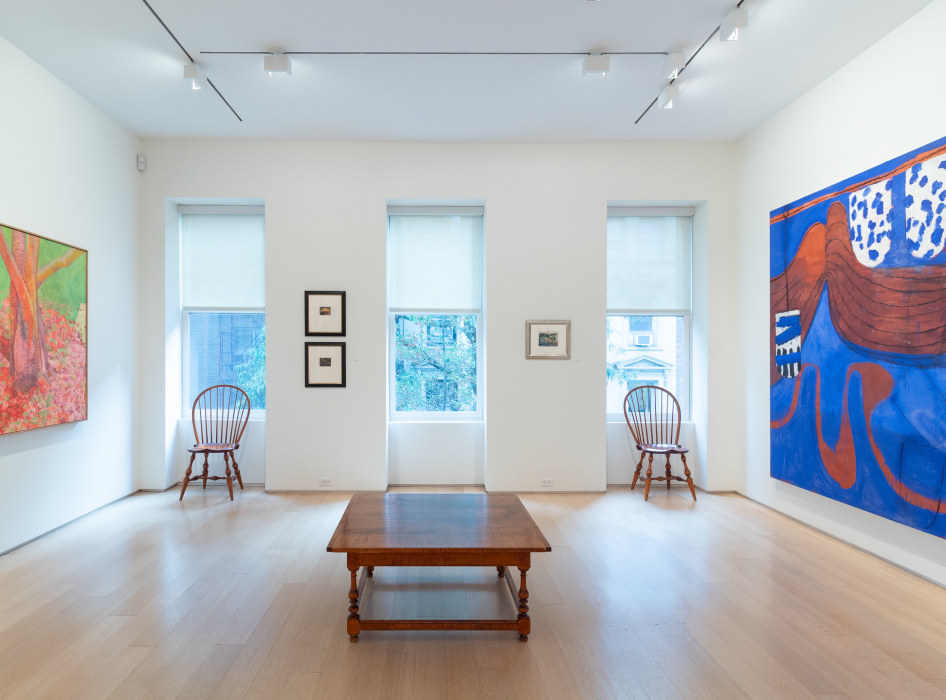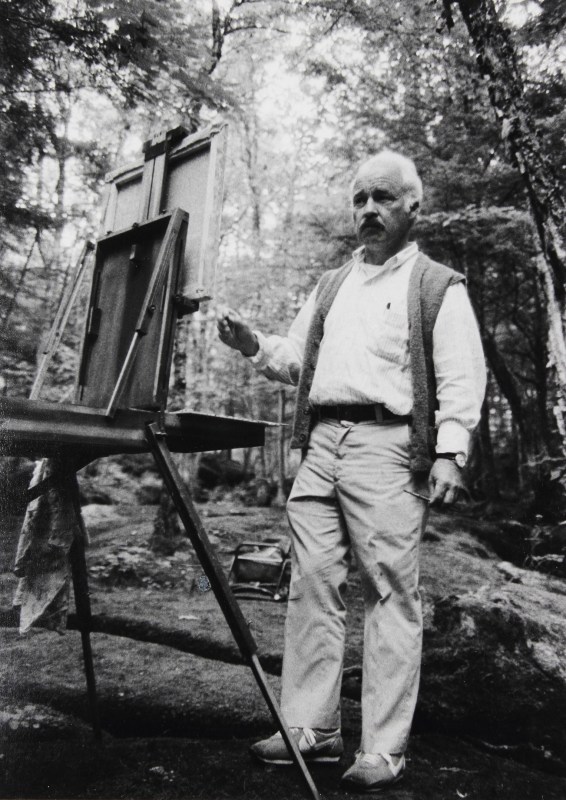

Neil Welliver. Photo by Rudy Burckhardt.
Neil Welliver (American, 1929-2005) is best known for his large-scale, vivid paintings and woodcuts of the remote Maine wilderness. Born in the small town of Millville, Pennsylvania, he first studied at the Philadelphia College of Art (1953), followed by Yale (1955), where Josef Albers and Burgoyne Diller were among his teachers. Their influence, as well as the rising popularity of Abstract Expressionism, is evident from Welliver’s early experimentations in abstraction, which include elements of color field painting, as well as the color theory of Albers, and the flattened, “allover” space of Pollock and de Kooning.
Welliver would go on to teach at Yale from the mid-1950s to the mid-1960s, by which time he had moved formally towards the representational, beginning to paint the landscape of Maine. In the late 1960s and early 70s he also produced scenes of nude bathers in streams, their bodies abstracted by the moving water. While continuing to work as the chair of the University of Pennsylvania graduate school (1966-1989), he moved permanently to Lincolnville, Maine, in 1970. Welliver lost his studio, home, and much of his work to a fire in 1975. The following year, his second wife and infant daughter died. Further tragedy came with the death of his college aged son in 1991. His artistic practice remained the mode through which he survived these hardships.
By the 1980s he was painting landscapes almost exclusively. The resulting body of work nods to many of Welliver’s early influences, as he utilizes natural repetitions and distortions to represent the innate abstraction of the natural world. These mature works are based on long plein-air studies, where Welliver would carry a 70-pound pack of painting supplies into remote landscapes, and sit for three hours at a time. He continued to paint the landscape surrounding his large property in Maine until his death in 2005.
Welliver was a member of the National Academy of Design, and received notable awards from the Guggenheim Foundation and the Skowhegan School of Painting and Sculpture. His work is in the collections of the Museum of Modern Art, New York; the Metropolitan Museum of Art, New York; and the Museum of Fine Arts, Boston, among others.
Study For Light Study, 1996, oil on canvas, 12 x 12 inches
Flotsam Allagash, 1988, oil on canvas, 48 x 48 inches
Marsh Shadow, 1984, oil on canvas, 96 x 96 inches
Barren, ca. 1981, oil on canvas, 12 x 14 inches
Big Flowage, 1979, oil on canvas, 96 x 96 inches
Untitled (Dead Tree), 1976, oil on linen, 14 x 9 inches
Two Nudes (Twice), 1970, oil on canvas, 72 x 60 3/8 inches
Beaver Dam, oil on canvas, 24 x 24 inches
